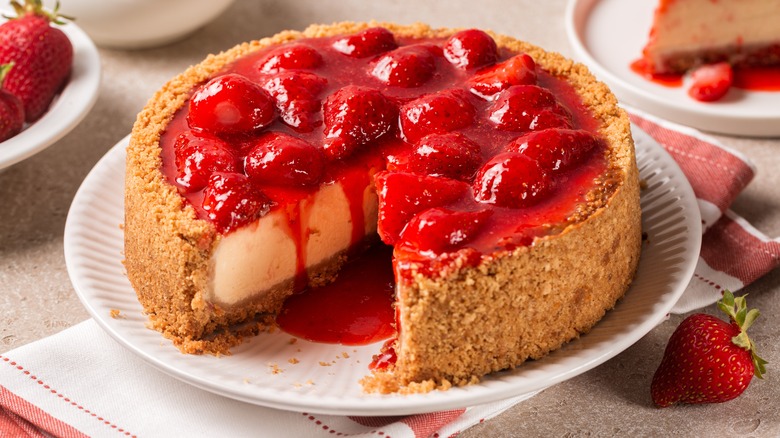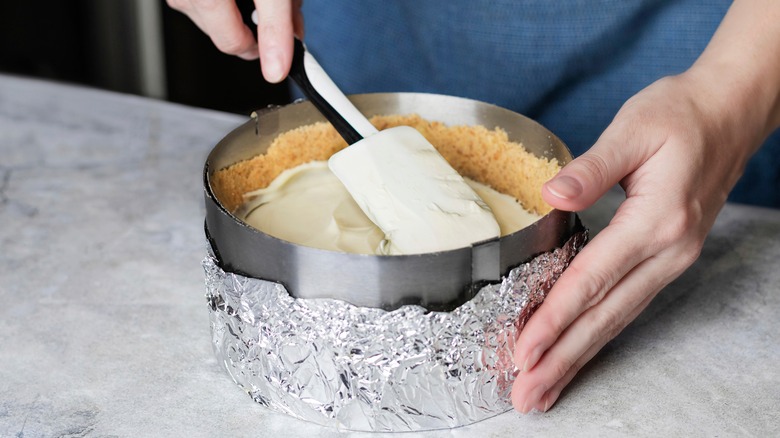Prevent Soggy Cheesecake Crust With One Simple Tip
Baked cheesecake makes a crowd-pleasing option for a dinner party dessert, but it's incredibly disappointing to release your lovingly made Basque cheesecake with caramelized honey from the pan only to find that the base is unpleasantly soggy. Using a layer of aluminum foil is the standard way to help protect the mixture while it's in a water bath in the oven. But if you really want to eliminate the risk, then you need to follow this tip and start using plastic wrap, too.
It's easy to see how the dreaded soggy bottom can occur. A springform pan is the best way to bake the dessert so that you can easily remove it, but it's also a receptacle that is prone to leaking when it's sitting in a water bath. Since cheesecake is not a cake or a pie but rather more like a delicately baked custard, that water bath helps it to heat gently without drying out and cracking in the oven. But you absolutely don't want any of that water to creep inside and into the cookie or cracker crumb crust. Just a tiny tear or crack in the foil is all it takes.
The advantage of using plastic wrap is that it provides an extra layer of protection for the dessert. And don't worry about the plastic wrap melting; most brands can safely be heated to the low temperature required to cook cheesecake. If you're unsure, just check that it is labeled as safe for microwave cooking.
Use plastic wrap as well as foil for extra protection
For the best chance at a water-resistant coating, wrap the outside of the pan in three or four layers of plastic wrap. Rotating the pan as you bring each layer up the sides will ensure you haven't missed any areas, and create a more secure seal. Then wrap the outside of the pan in a couple of layers of foil to protect it further.
If multiple layers of plastic wrap sounds fiddly, then you could use a clean oven-safe plastic bag instead. Go for a larger one, like you might use when brining poultry, or a slow cooker liner bag. You can always wash and reuse it for future cheesecakes, to reduce waste. Alternatively, place the springform pan inside a pan that is slightly larger than the one holding your cheesy goodness — then put that into the water bath.
If you're still worried about leaks, adjust the process so that the water bath doesn't pose a risk. Try placing the roasting tin of water on the rack below the one you're baking the cheesecake on, so the pan is not sitting directly in the liquid. Or eliminate the water bath altogether, and just bake the dessert at a lower temperature of around 250 degrees Fahrenheit. Of course, to make things even easier, you could make a no-bake dark chocolate Oreo cheesecake instead. It's quick, easy, and doesn't require the oven — or a water bath — at all.


